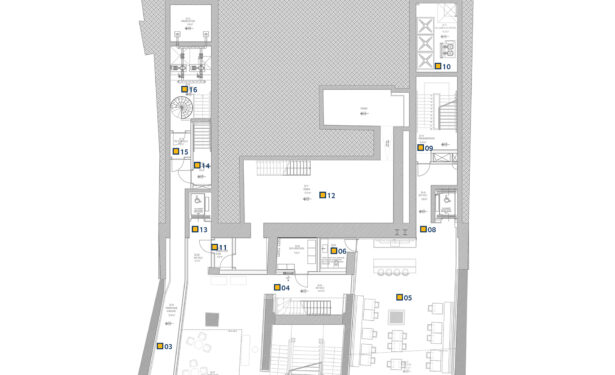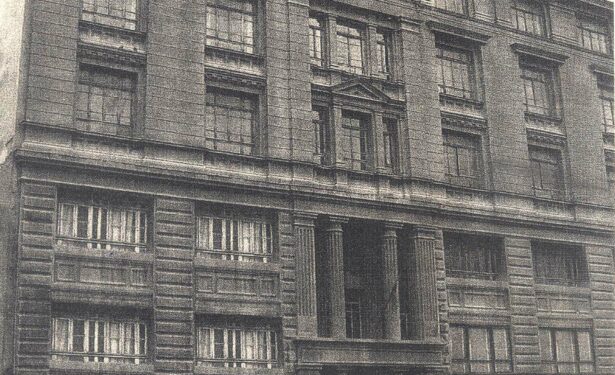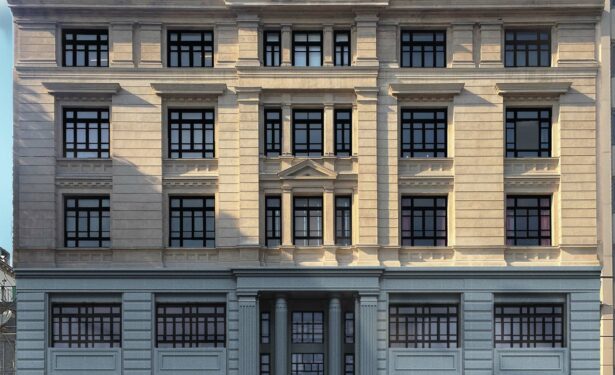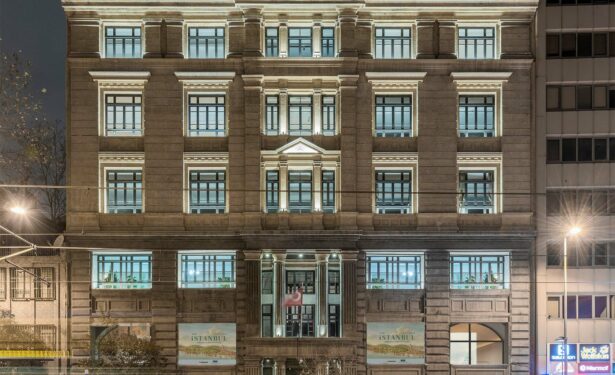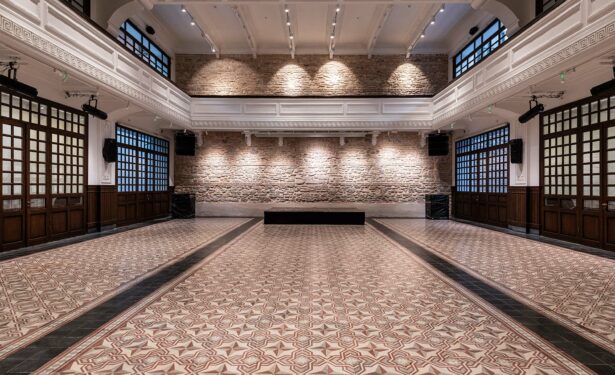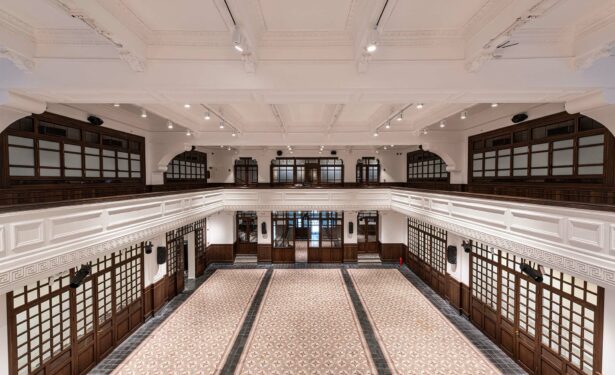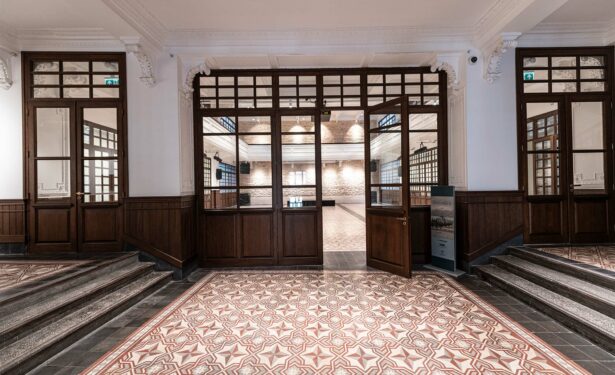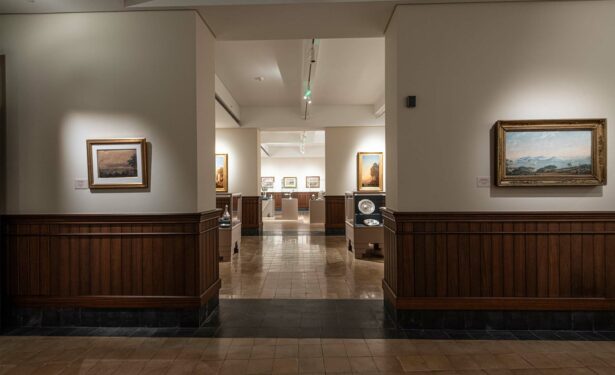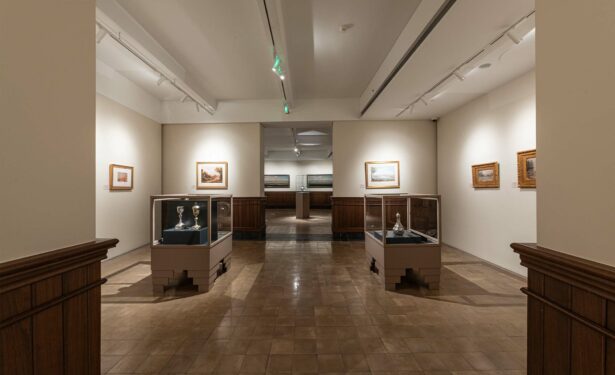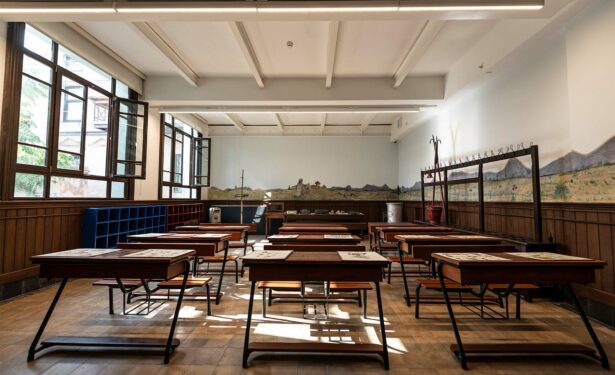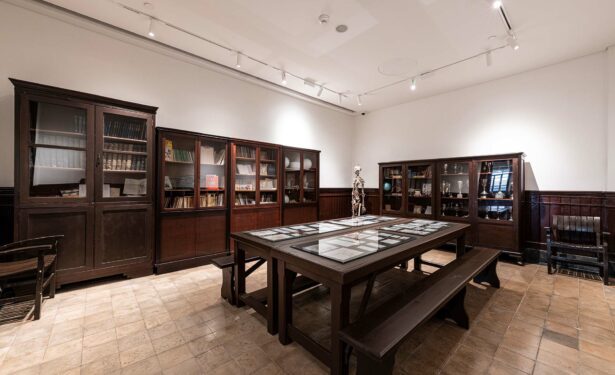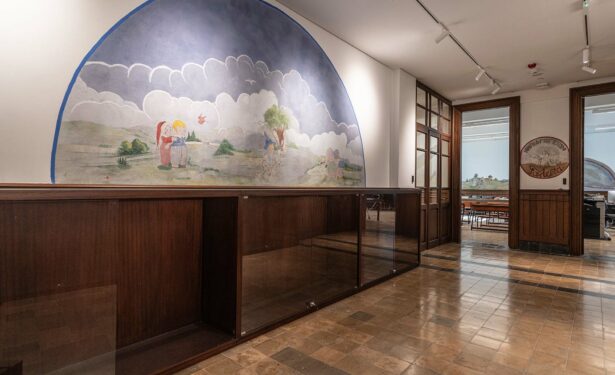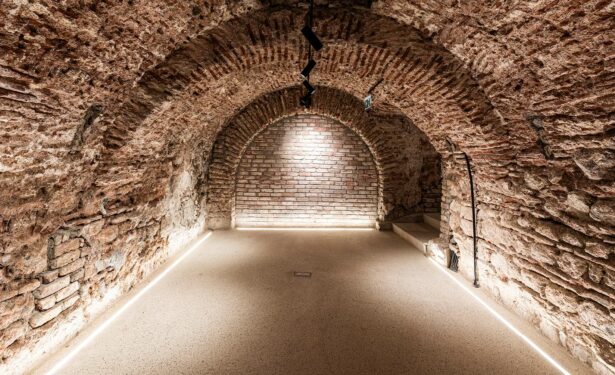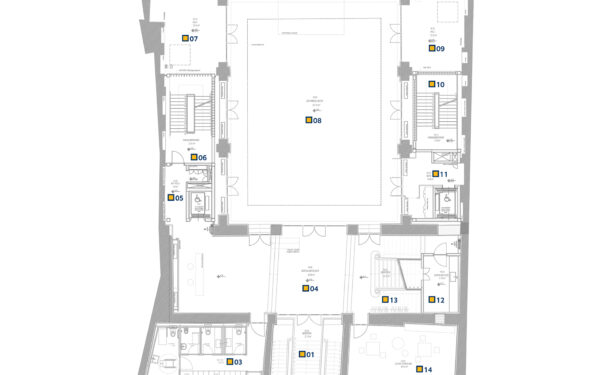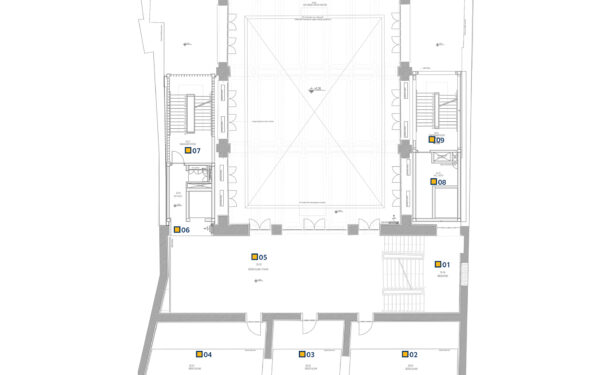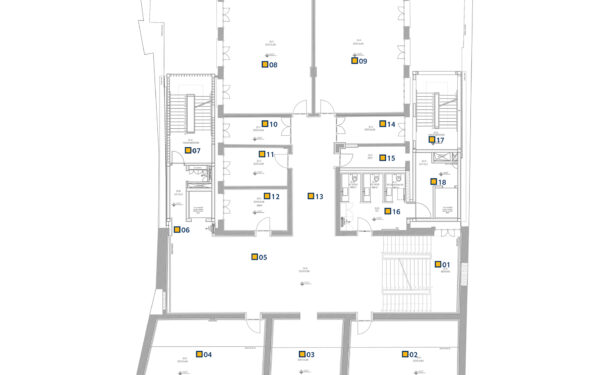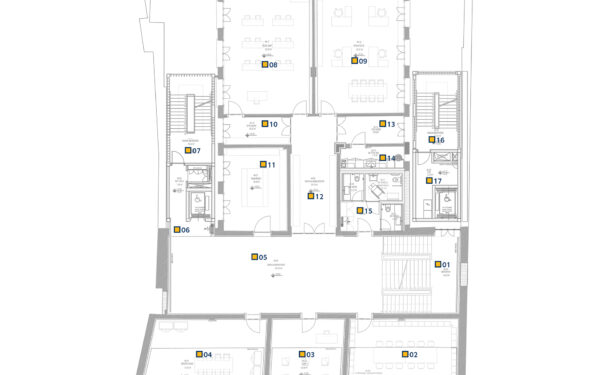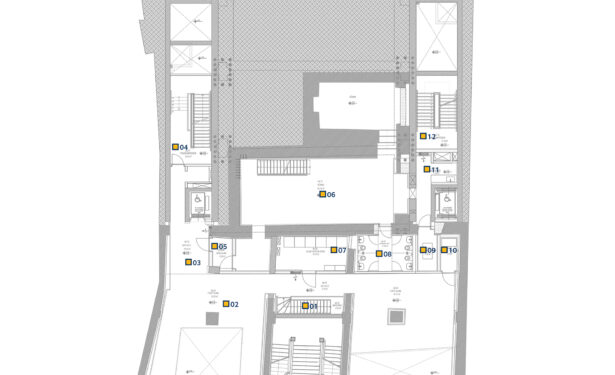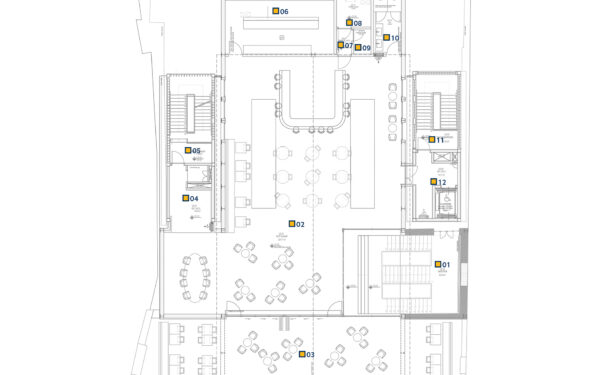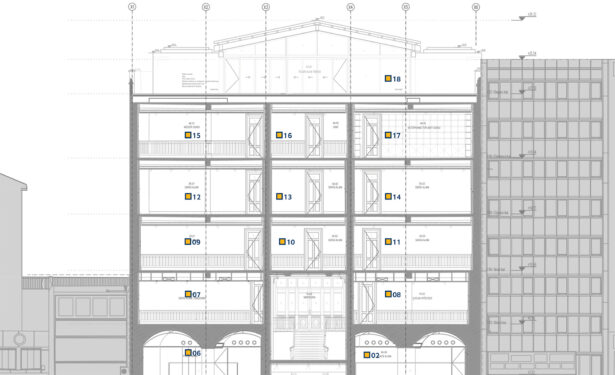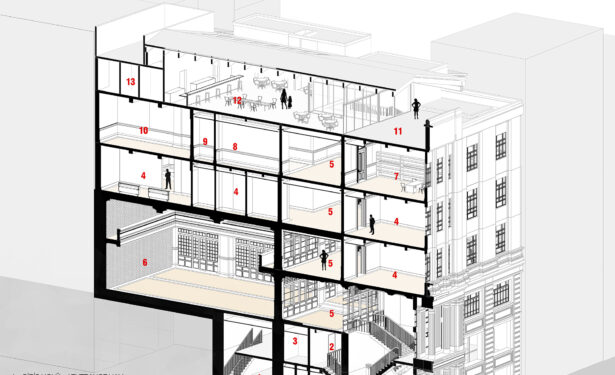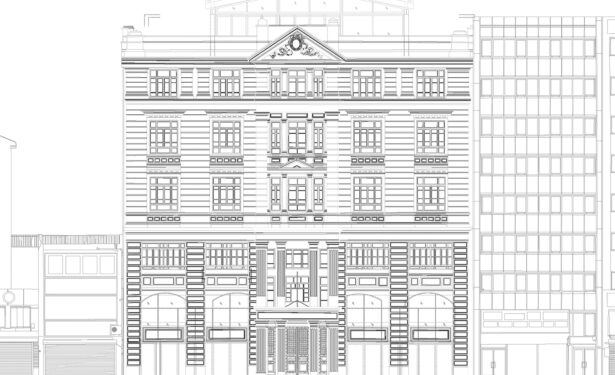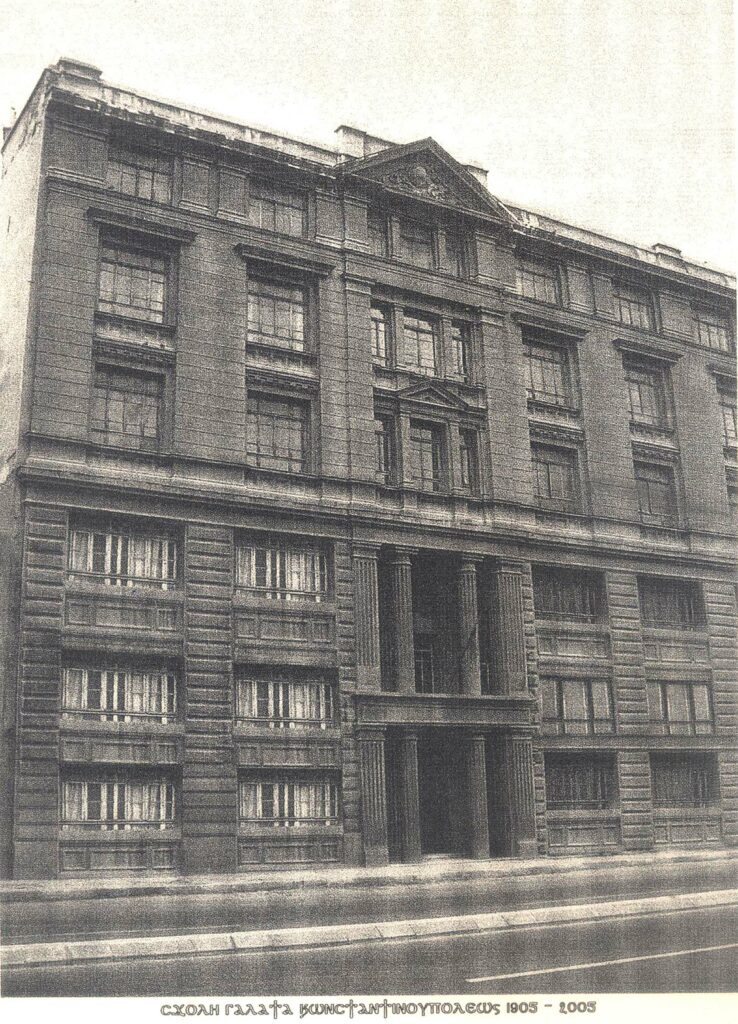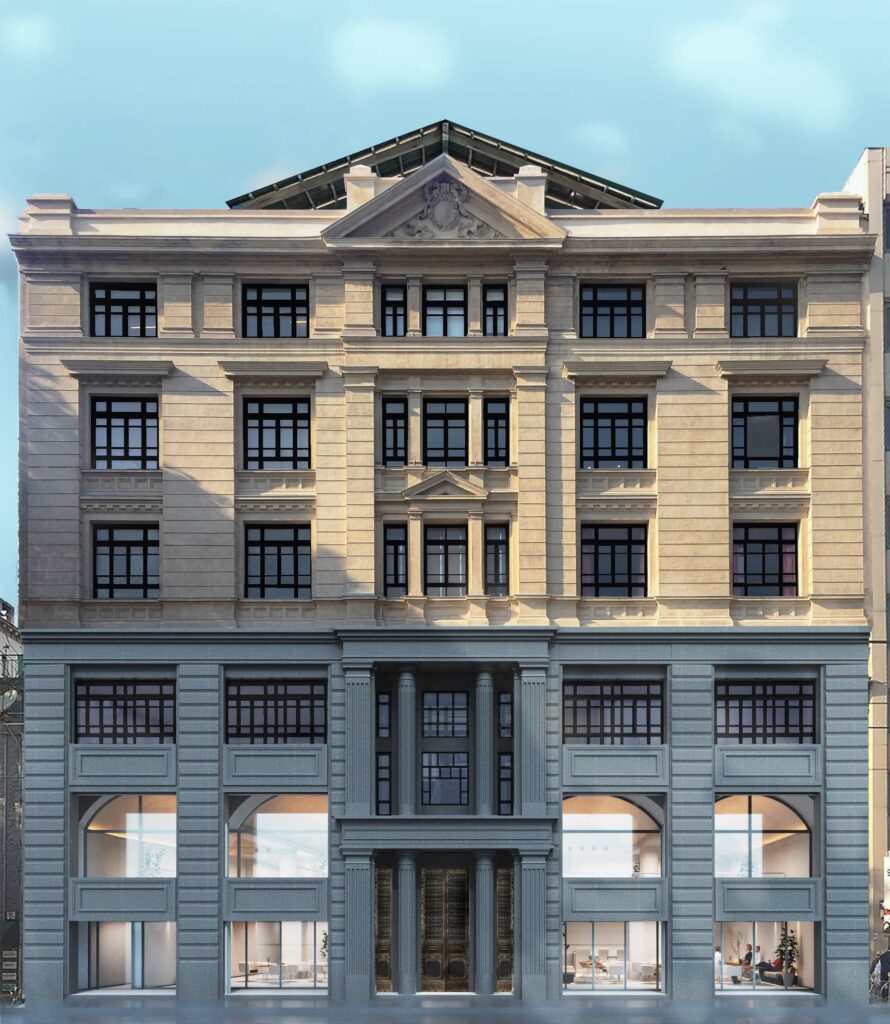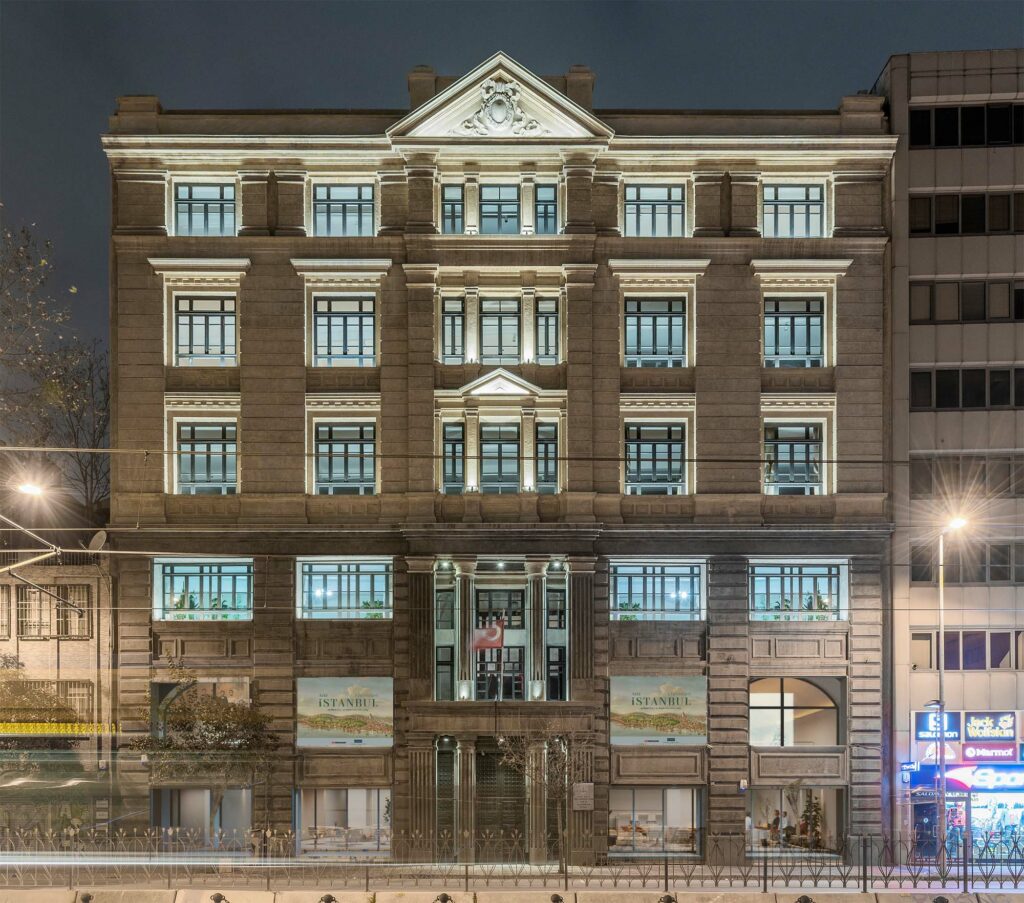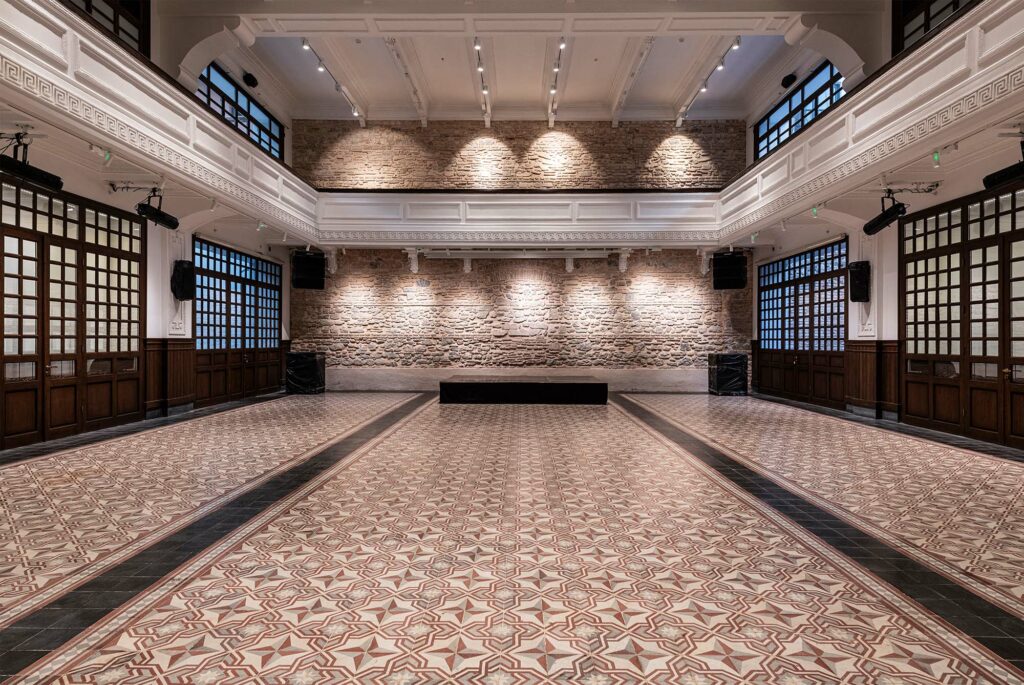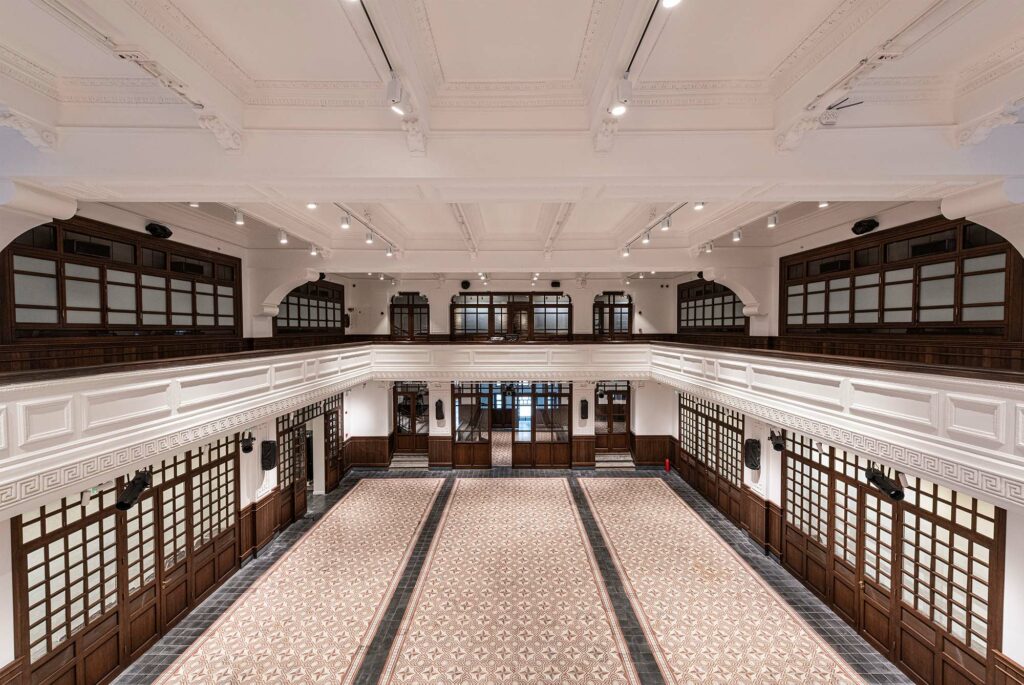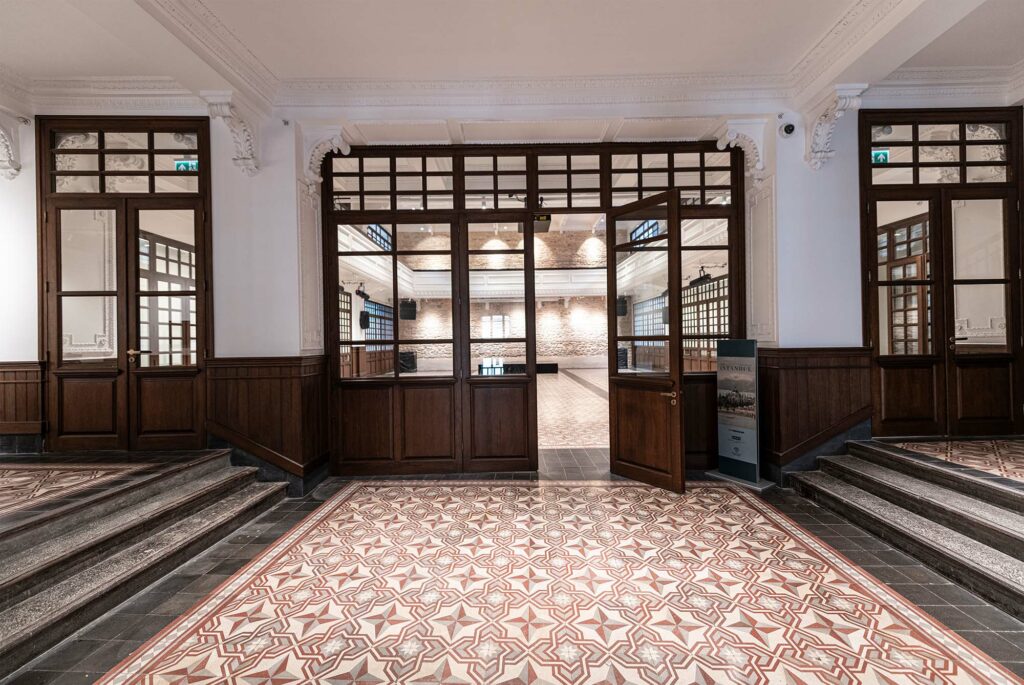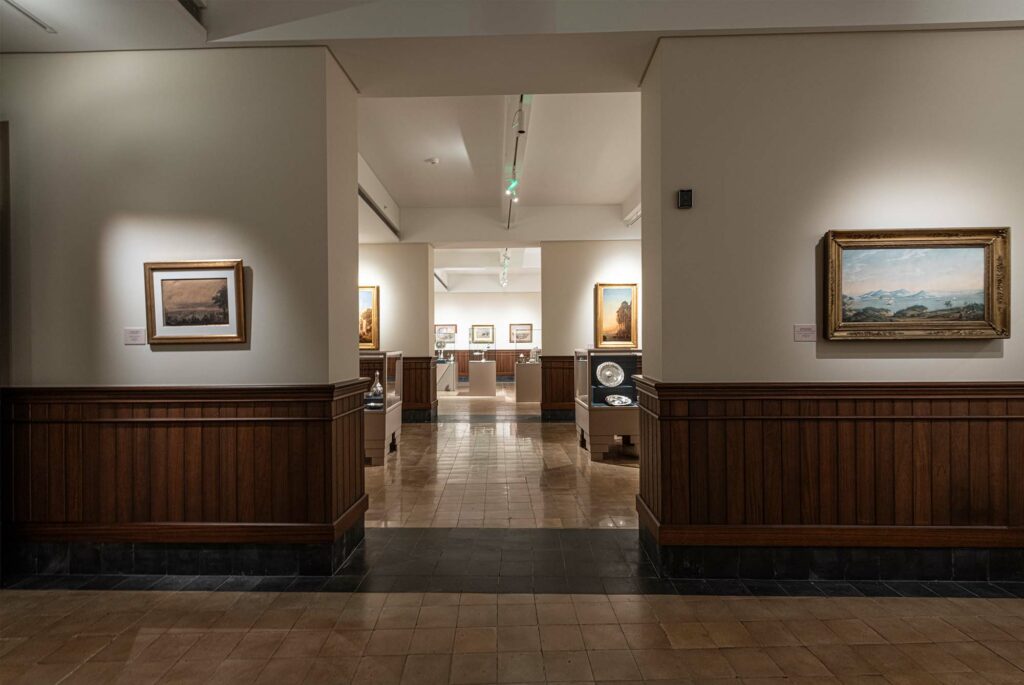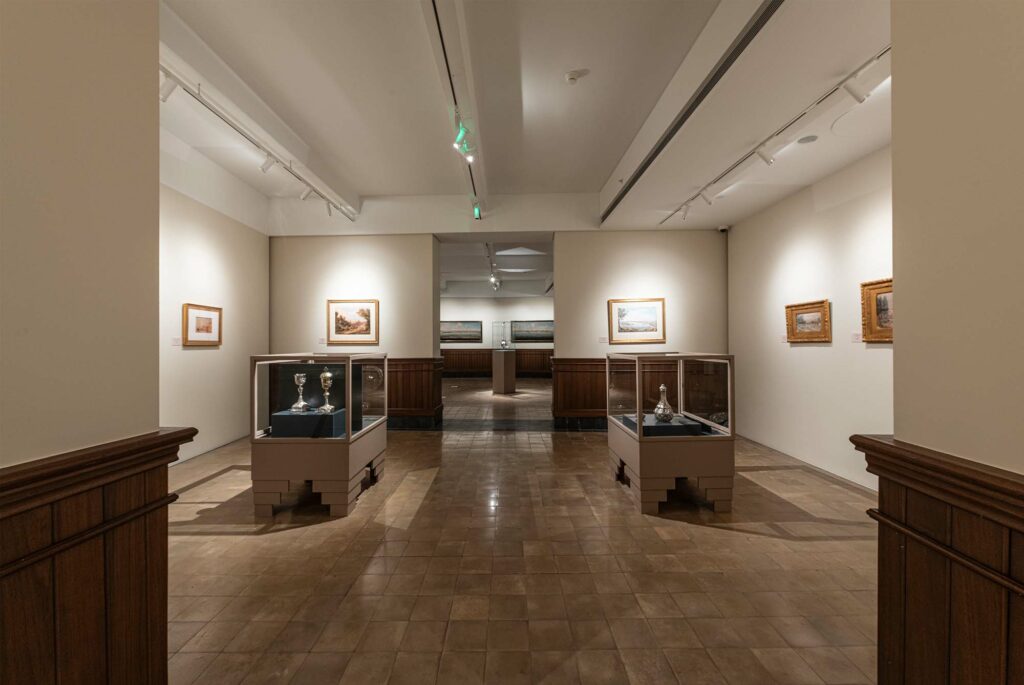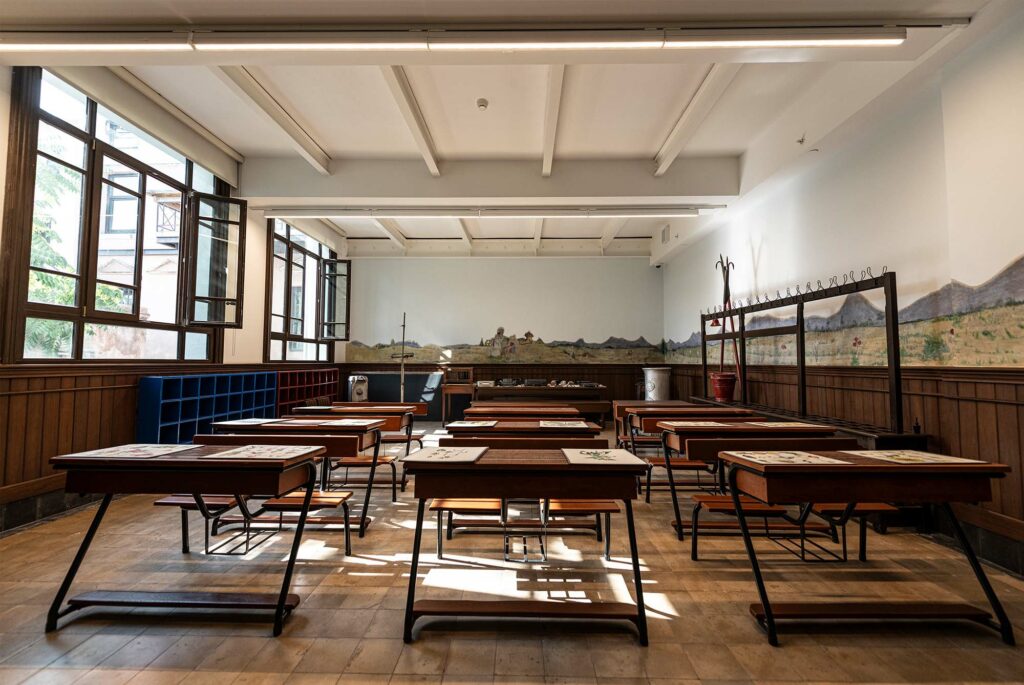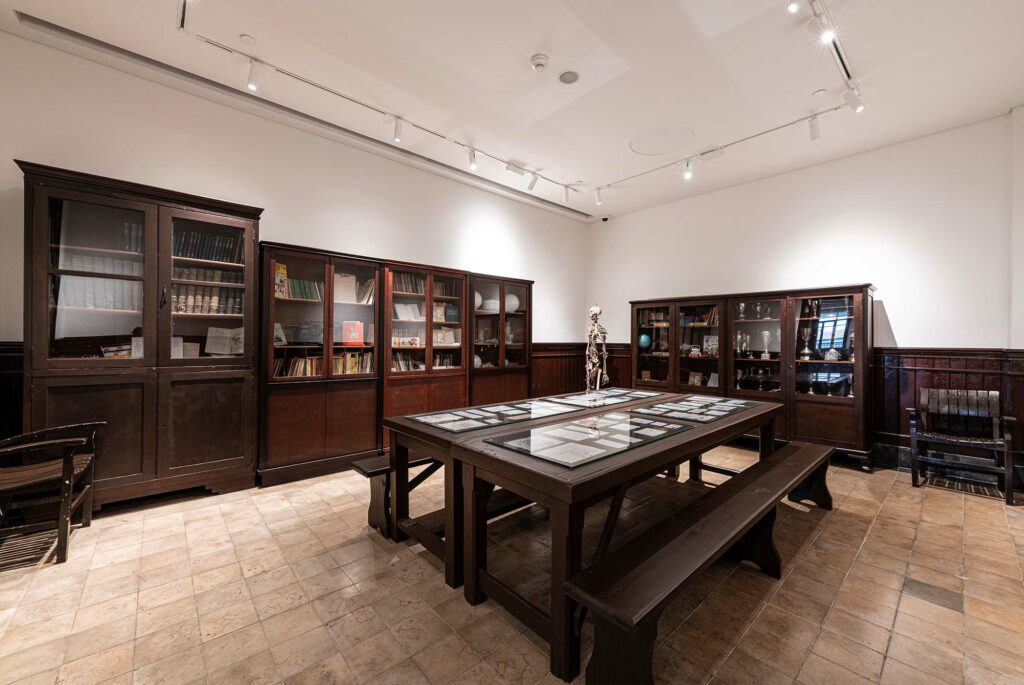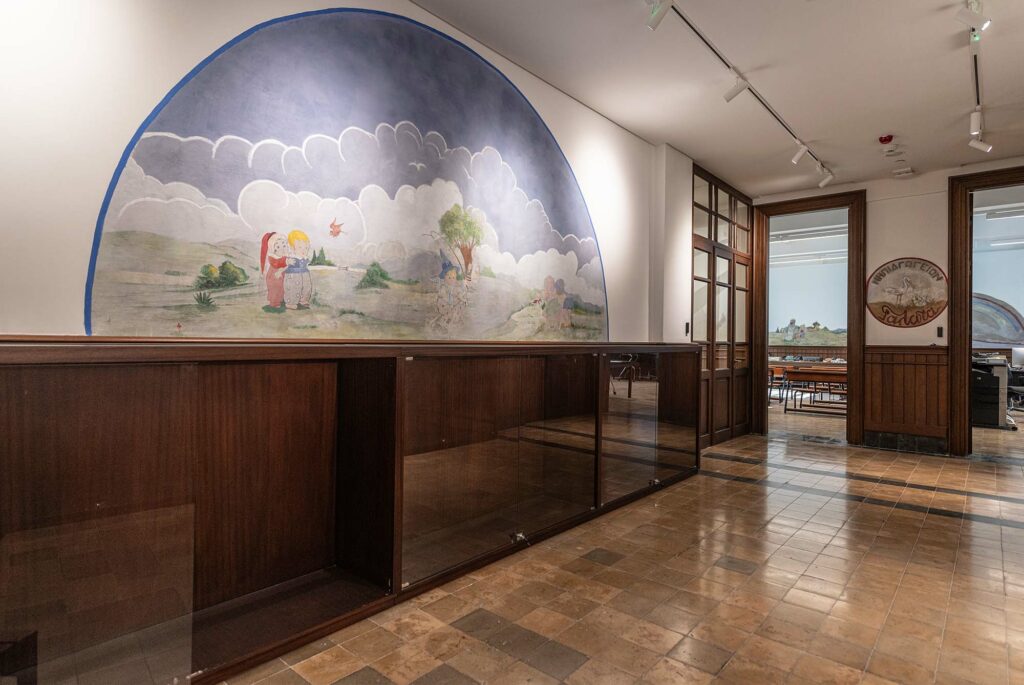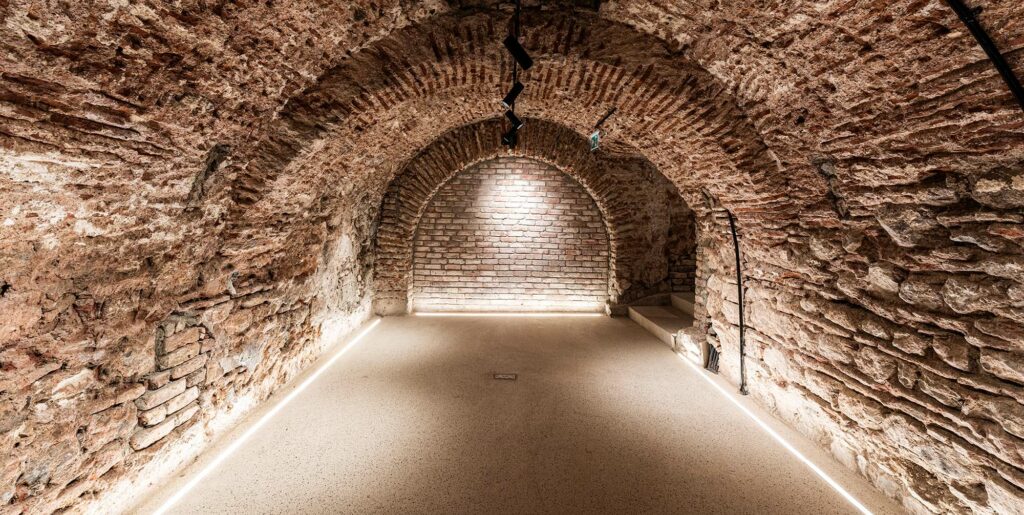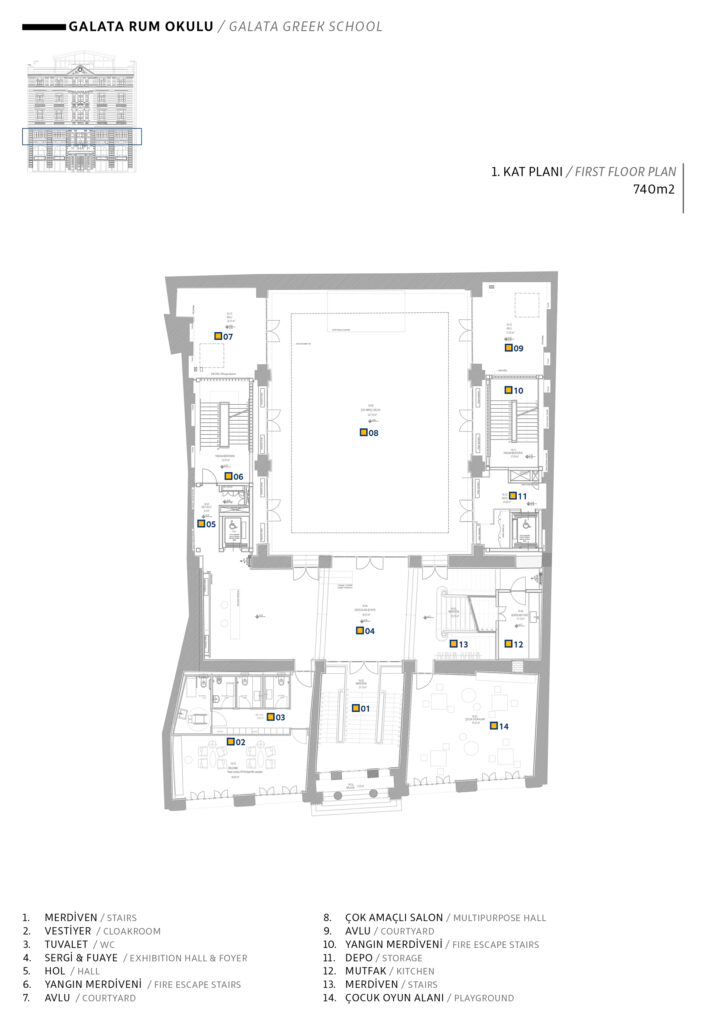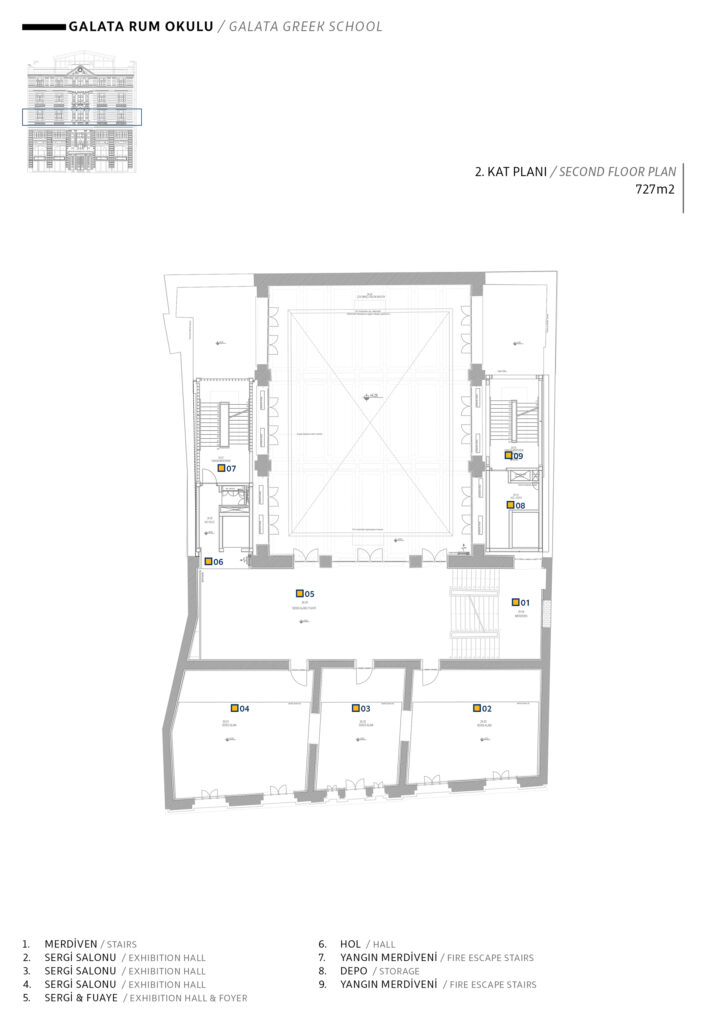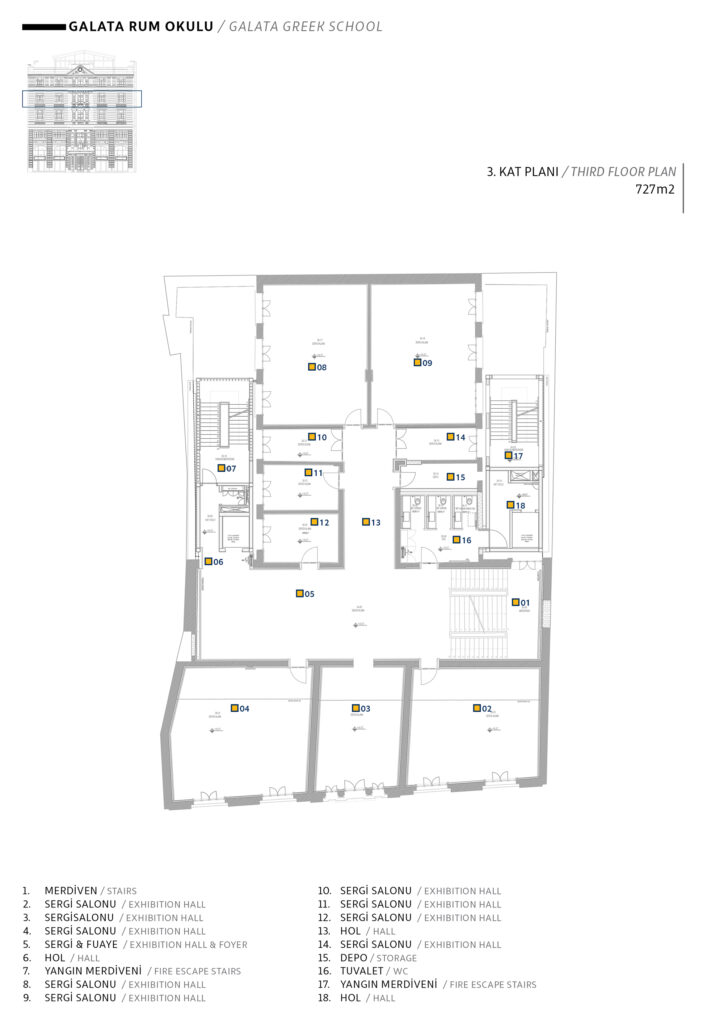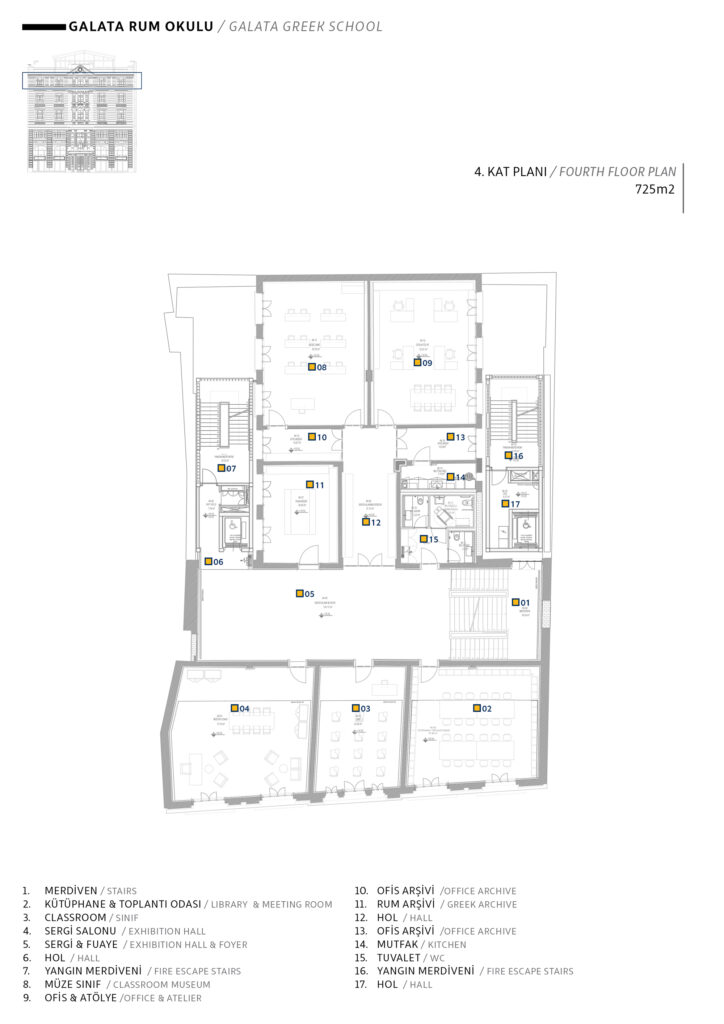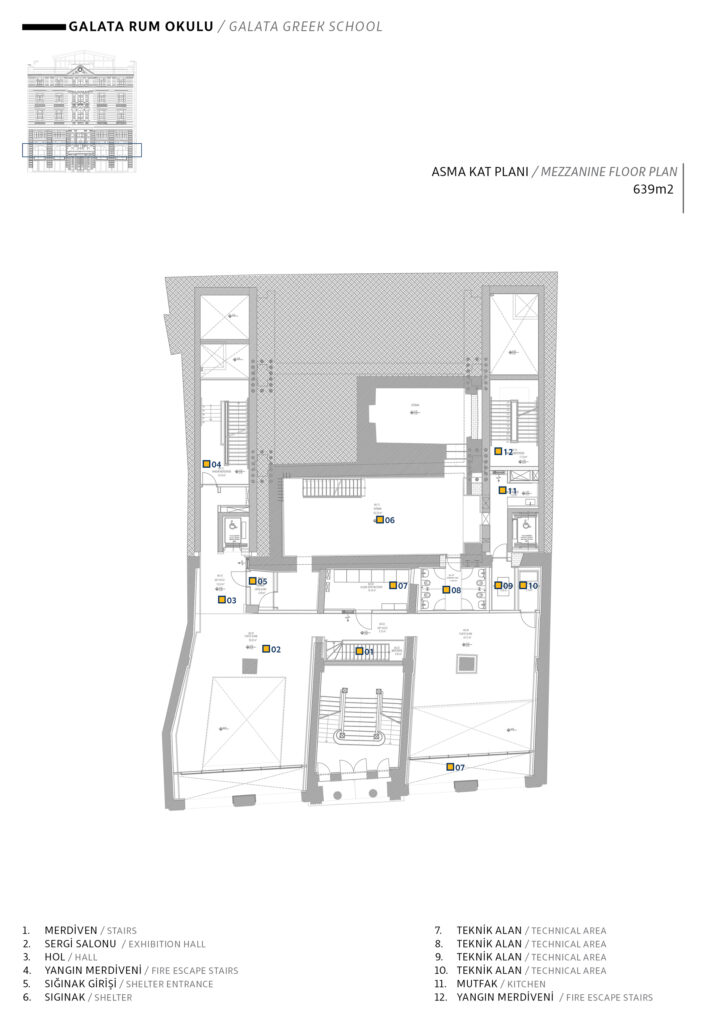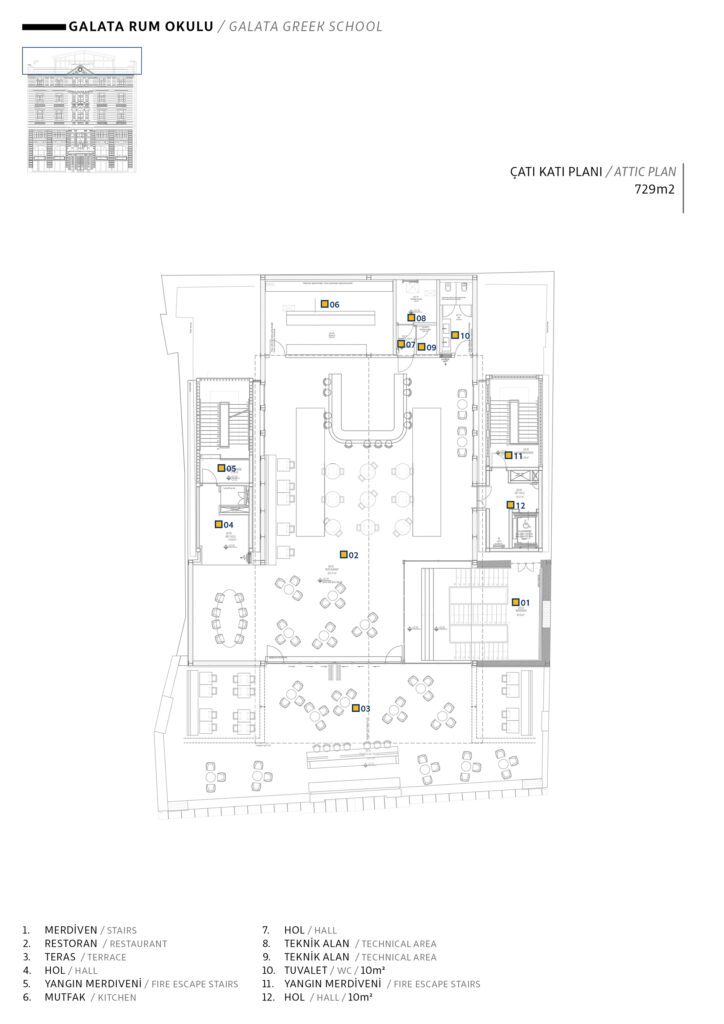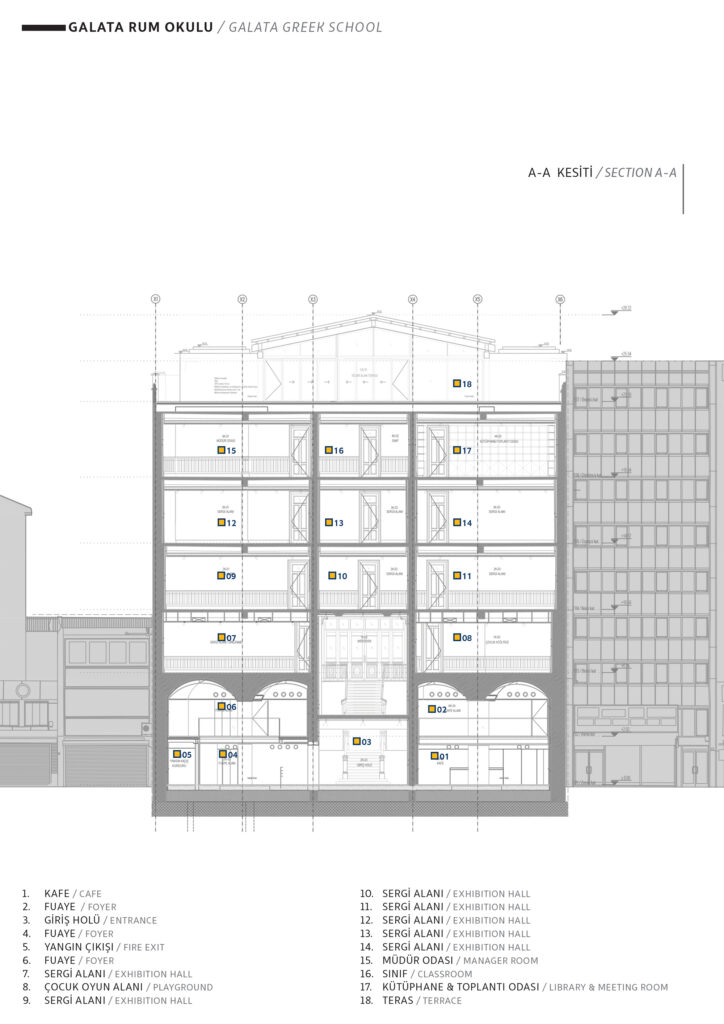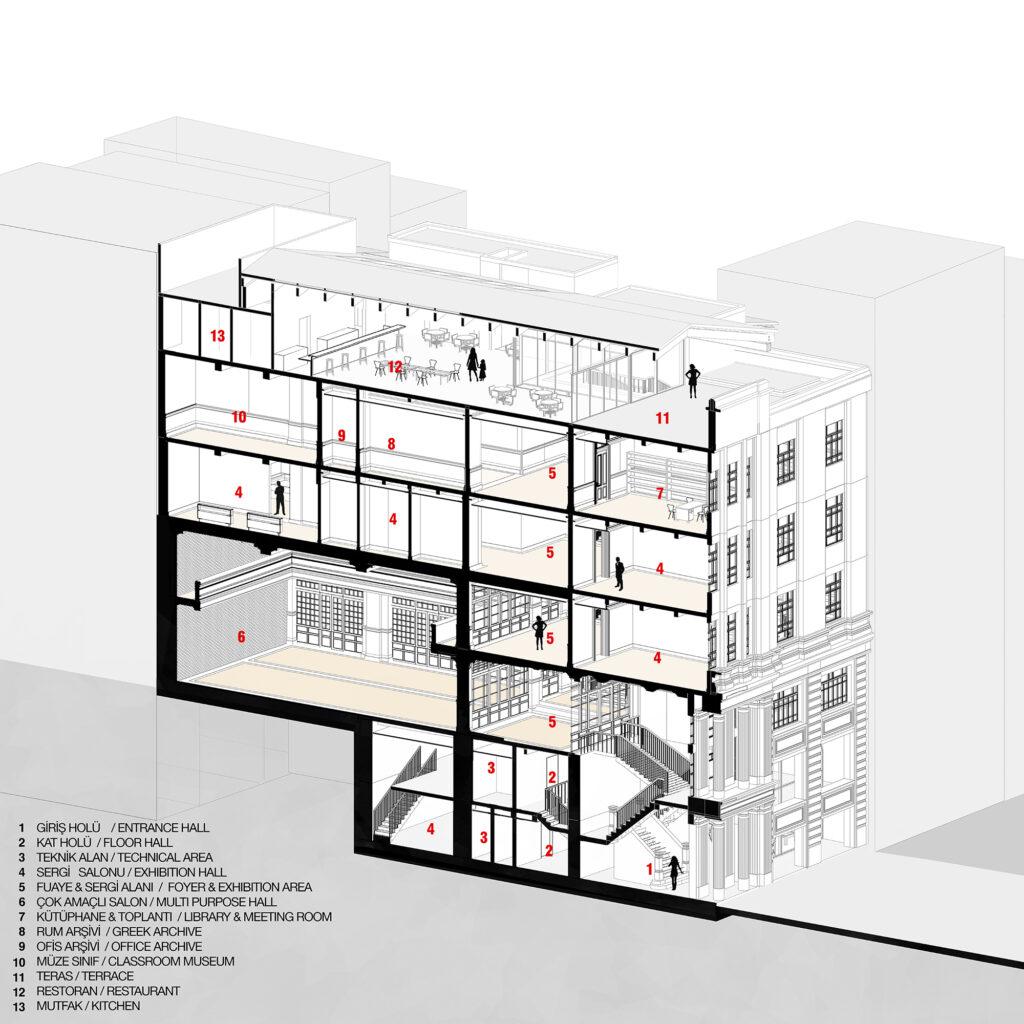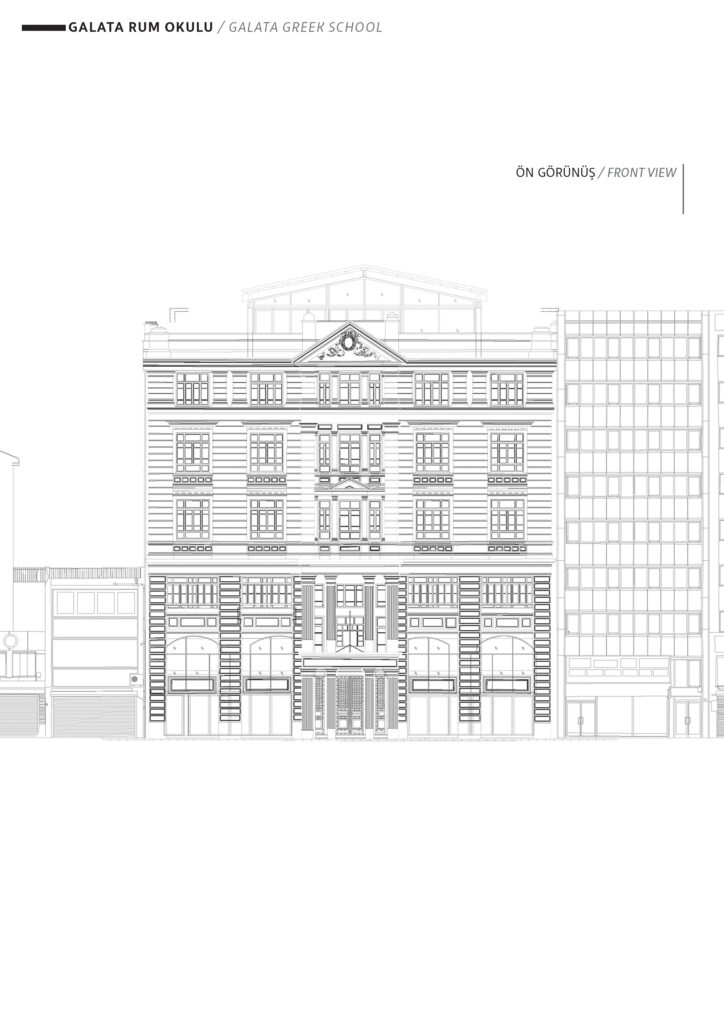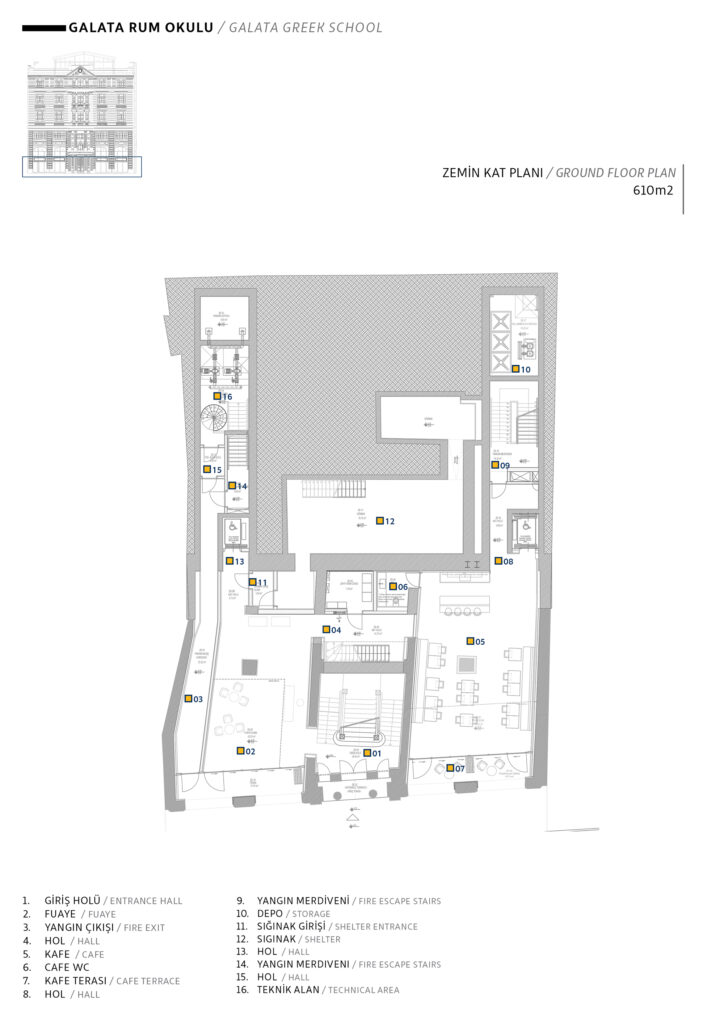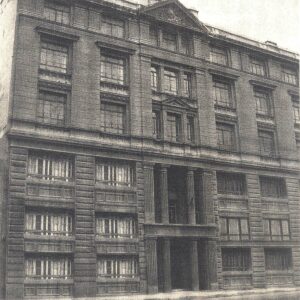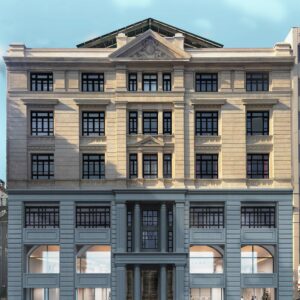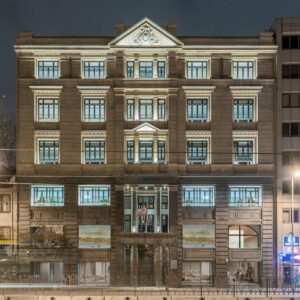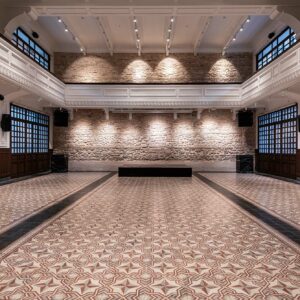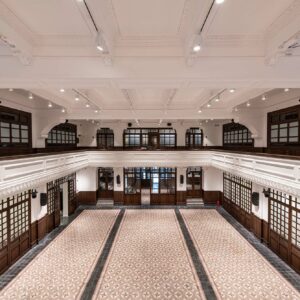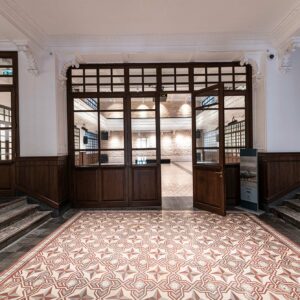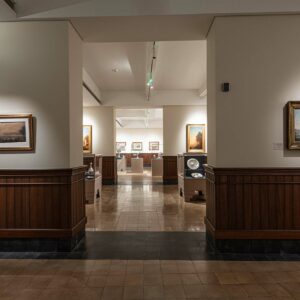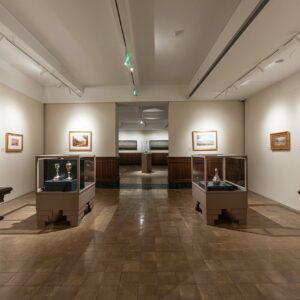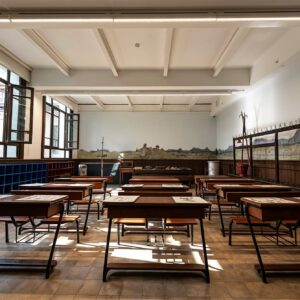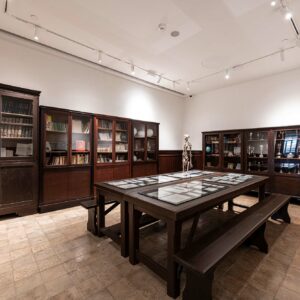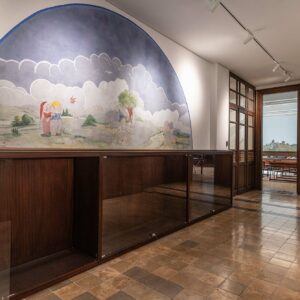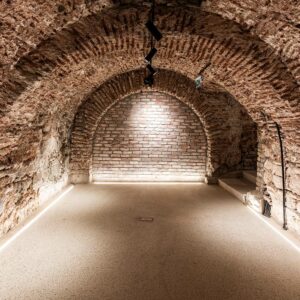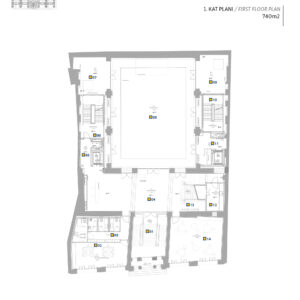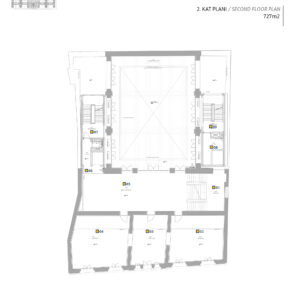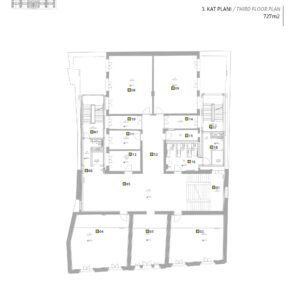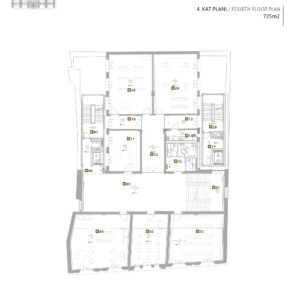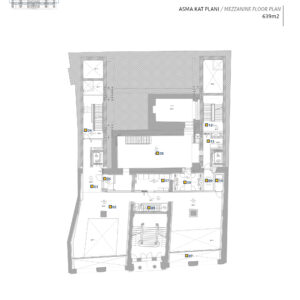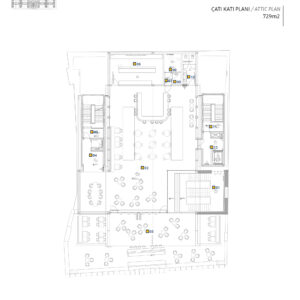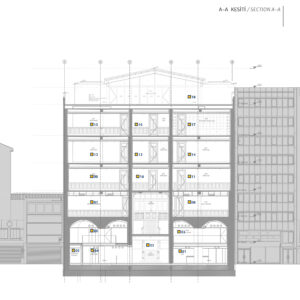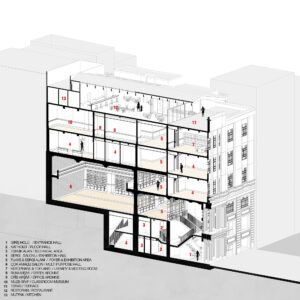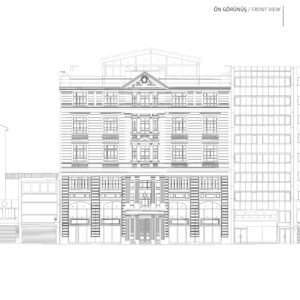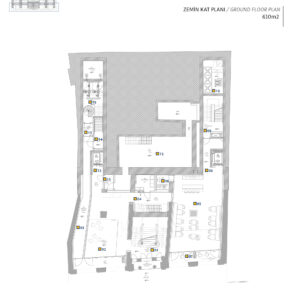- 19 February 2024
- 753 defa okundu.
Galata Greek School Cultural Center Renovation Project
Designed by Tabanlıoğlu Architecture, Galata Greek School Cultural Centre Renovation Project is located in Karaköy.
cultural heritage solidarity
In the modernization process of the Ottoman Empire, the Galata Greek School was an important institution for education, specifically for the Greek community. Galata Greek School, whose architects were Patroklos Kambanakis and Stavros Christidis and Perikli Fotiadis was the architectural consultant, was completed in 1885, after a 30-year construction period, with the initiatives of Eleni Zarifi, one of the philanthropists of the time, and is one of the well-established and modern educational institutions opened at the beginning of the 20th century.
The education started in 1910, the School suspended its educational activities in 1988, due to demographic problems, and was officially closed to education in 2015.
The building, built in the Neoclassical -eclectic architectural style and returned to the Greek community of Istanbul in 2012, is one of the witnesses of a strong past heritage that we can still touch today. Galata Greek School, which has hosted many cultural events since 2012, aims to reach future generations by preserving its original character with its new function.
Based on the restitution projects (of 1903 and 1958), starting with strengthening the physical structure and improvements aligned with earthquake regulations, taking all fire and protection measures, the school is restructured and renovated as an institution appealing to the international culture and arts community.
It has been designed based on a spatial organization that includes conference, meeting, exhibition halls, library, workshop, and archive units, including the addition of air conditioning systems, providing disabled access, and contemporary infrastructure support suitable for new functions. In the context of financial resources, the entrance was planned as a cafe, and the terrace was used as a restaurant for the Institution to be self-sufficient.
Starting from the iron entrance door, the glass and wooden joinery in the spaces were renewed by the original, along with the necessary cleaning, repair, and strengthening works on the front and all other facades.
Additions were cleaned by the original, and mosaics, wooden wall panels, and wooden doors, which were removed due to needs such as reinforcement, fire precautions, and air conditioning, were renewed while preserving their original characters.
Spatial richness was gained by cleaning and preserving the surprising layers such as stone courtyard walls and arches that were exposed during the restoration and included in the design.
Elevators and stairwells were added at both sides, to enable and facilitate access between floors in the building which will serve as a cultural center and also host exhibitions.
The two side courtyards of the main hall, which is used as an exhibition hall and a multi-purpose hall, have been rearranged as an open-air foyer alternative. For the realization of various events, the main hall was supported by professional AV systems and technical infrastructure.
Independent from the main entrance, accessed from the street level, the two shop areas on the left were planned as an entrance foyer, as a single fluid space connected with the main entrance, by removing the intermediate secondary walls and joining them together.
At the rooftop, the terrace restaurant opens to Galata and Bosphorus views; the roof piece, created with a 20% slope, was designed with contemporary materials. By complying with the ridge level of the existing building the silhouette of the building, on the street side is preserved, the original architectural features are emphasized, also by use of transparent building elements.
One of its aims being the ambassador of both Greek identity and cultural heritage, Galata Greek School has been reconstructed as a contemporary cultural center that establishes direct contact with its environment, thus will serve by appealing to more users.
Preserving its deep-rooted past, its memory and spirit of education, and the policy of art and cultural activities of the previous decade, and in order to create a perspective for the future with its international cultural and artistic ties; the School aims to be a cultural, artistic and educational space that embraces all Istanbulites, enrichein the public life of the city.
The renovation project integrates contemporary systems in favor of the building and its new functions adopts and strengthens the cultural identity of the School that hosts cultural and artistic events as of 2012.
Under the auspices of Patriarch Bartholomew I, with the sponsorship of Marina and Athanasios Martinos, and with the coordination of Penelis Consulting Engineers, the construction work was carried out by Ark Construction by the original conditions of the building.
Targeting a cultural and educational hub by creating a future perspective while preserving the relation to its Greek heritage and embracing all cultural identities of the city, Galata Greek School came back to life with the exhibition, “Cherished ISTANBUL” on May 24th, 2023.
